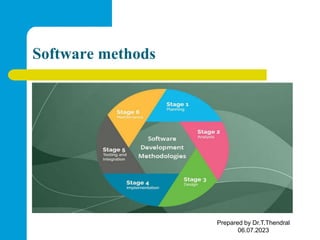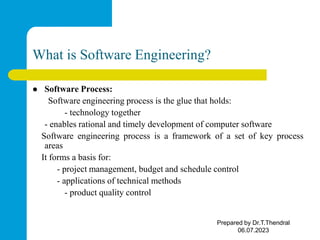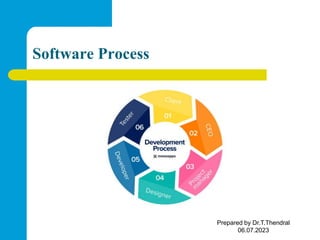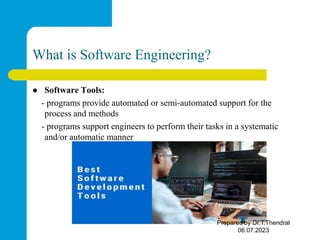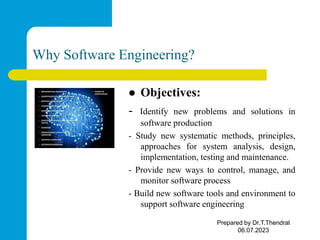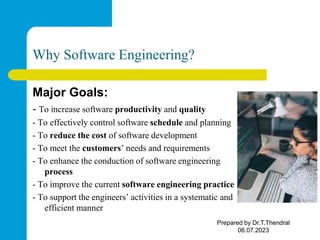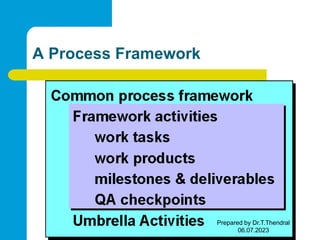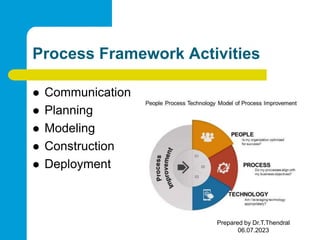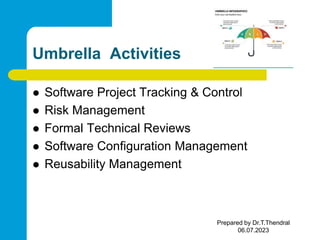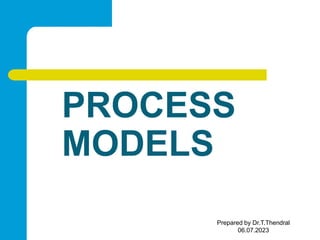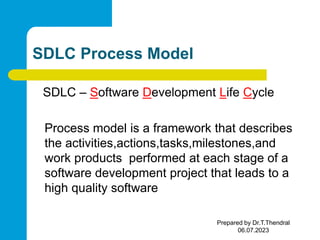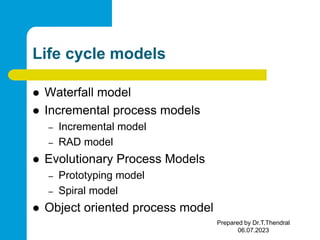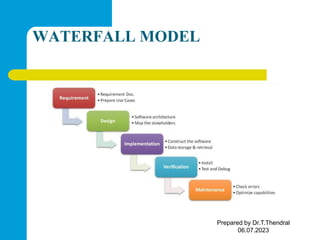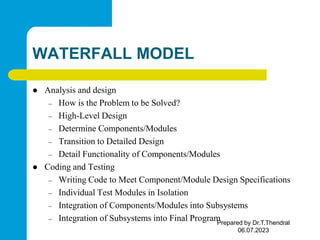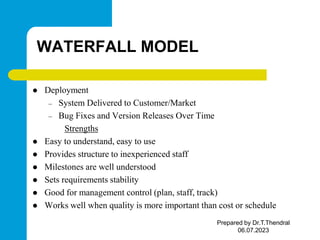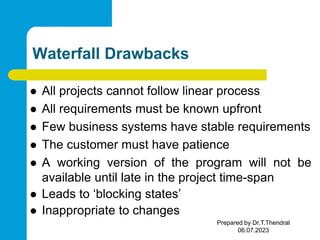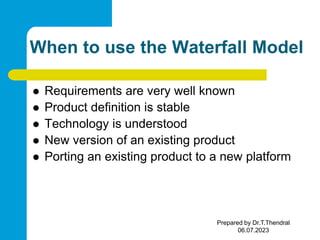This document provides an introduction to software engineering. It outlines the course objectives, which are to enhance understanding of software engineering methods, techniques for developing software systems, object-oriented concepts, and software testing approaches. On completing the course, students will be able to understand basic software engineering concepts, apply engineering models to develop applications, implement object-oriented design, conduct in-depth analysis for projects, and design new software projects using learned concepts. The document also defines software and its characteristics, different software types, and provides overviews of software engineering, methods, processes, tools, and process models like waterfall.
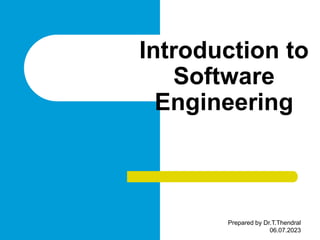
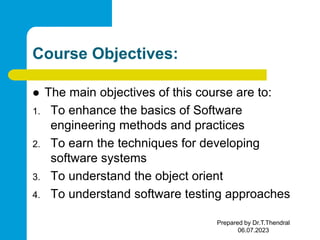

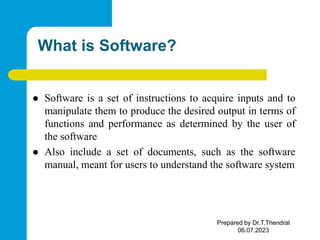
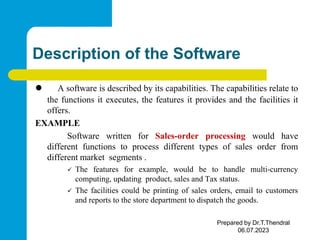
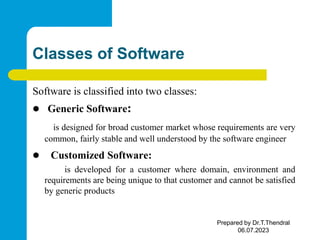
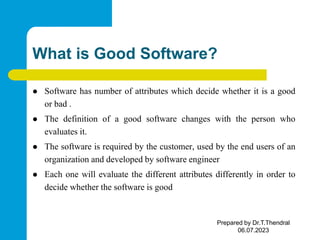
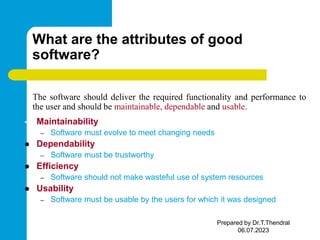


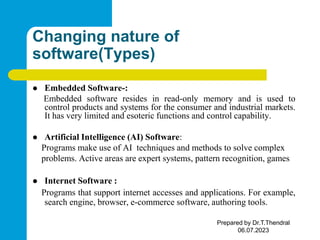
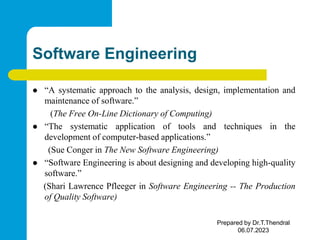
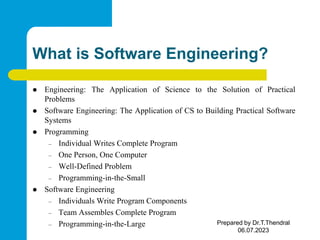
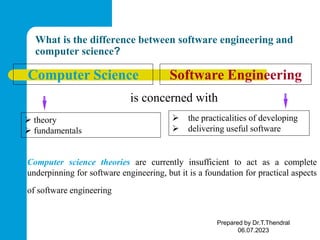
![What is Software Engineering?
Although hundreds of authors have developed personal definitions of software
engineering, a definition proposed by Fritz Bauer provides a basis:
“[Software engineering is] the establishment and use of sound
engineering principles in order to obtain economically software that is
reliable and works efficiently on real machines.”
The IEEE [IEE93] has developed a more comprehensive definition when it
states:
“Software Engineering: (1) The application of a systematic, disciplined, quantifiable approach
to the development, operation and maintenance of software; that is, the application of
engineering to software. (2) The study of approaches as in (1).” Prepared by Dr.T.Thendral
06.07.2023](https://image.slidesharecdn.com/unit1-introductiontosoftwareengineering-230710065742-dc6f5a7d/85/Unit-1-Introduction-to-Software-Engineering-ppt-15-320.jpg)


